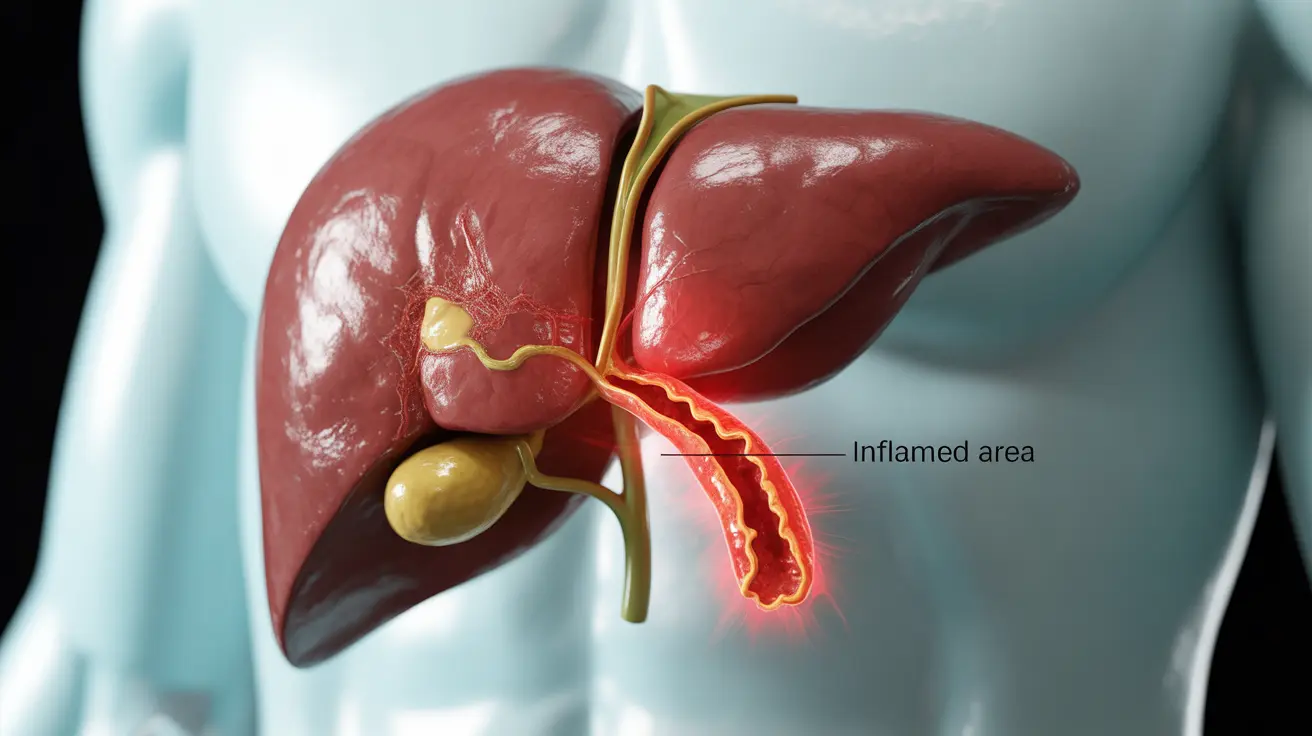Cholangitis is a serious medical condition characterized by inflammation of the bile ducts, which are vital channels that carry bile from the liver to the small intestine. This condition can occur suddenly (acute) or develop over time (chronic), and requires prompt medical attention to prevent severe complications.
When these essential bile ducts become infected or obstructed, it can lead to potentially life-threatening situations if left untreated. Understanding the signs, symptoms, and available treatments is crucial for early intervention and better outcomes.
Common Signs and Symptoms
The presentation of cholangitis can vary depending on whether it's acute or chronic. Recognizing these symptoms early is essential for timely medical intervention.
Acute Cholangitis Symptoms
Acute cholangitis often presents with a distinct set of symptoms known as Charcot's triad:
- Fever and chills
- Right upper abdominal pain
- Jaundice (yellowing of skin and eyes)
Chronic Cholangitis Symptoms
Chronic cholangitis may develop more gradually with symptoms including:
- Persistent fatigue
- Intermittent fever
- Itchy skin
- Unexplained weight loss
- Recurring abdominal discomfort
Diagnostic Procedures
Doctors employ various diagnostic tools to confirm cholangitis and identify its underlying cause:
- Blood tests to check liver function and infection markers
- Imaging studies (ultrasound, CT scan, MRI)
- Endoscopic retrograde cholangiopancreatography (ERCP)
- Magnetic resonance cholangiopancreatography (MRCP)
Treatment Approaches
Treatment for cholangitis typically involves a multi-faceted approach, focusing on both addressing the immediate infection and resolving any underlying blockages.
Immediate Interventions
The initial treatment phase usually includes:
- Intravenous antibiotics
- Fluid replacement therapy
- Pain management
- Monitoring of vital signs
Surgical and Procedural Options
More advanced cases may require:
- ERCP with stone removal or stent placement
- Surgical drainage procedures
- Bile duct reconstruction in severe cases
Prevention and Risk Reduction
While not all cases of cholangitis can be prevented, certain measures can help reduce risk:
- Regular medical check-ups
- Prompt treatment of gallstone disease
- Maintaining good hygiene practices
- Avoiding excessive alcohol consumption
- Managing underlying conditions like autoimmune disorders
Frequently Asked Questions
What are the common symptoms of acute and chronic cholangitis? Acute cholangitis typically presents with fever, right upper abdominal pain, and jaundice. Chronic cholangitis often shows more gradual symptoms including fatigue, intermittent fever, itchy skin, and recurring abdominal discomfort.
How is cholangitis diagnosed and what tests are used to detect bile duct inflammation or obstruction? Diagnosis involves blood tests to check liver function and infection markers, imaging studies like ultrasound and CT scans, and specialized procedures such as ERCP and MRCP to visualize the bile ducts.
What treatments are available for acute cholangitis and how do doctors relieve bile duct blockages? Treatment typically involves intravenous antibiotics, fluid therapy, and pain management. Bile duct blockages are often addressed through ERCP procedures, which can remove stones or place stents to restore bile flow.
Can cholangitis be prevented, and what lifestyle changes reduce the risk of bile duct infections? While not entirely preventable, risk can be reduced through regular medical check-ups, prompt treatment of gallstone disease, maintaining good hygiene, limiting alcohol consumption, and managing underlying conditions.
What complications can arise from untreated cholangitis and when is a liver transplant necessary? Untreated cholangitis can lead to severe complications including sepsis, liver abscess, and organ failure. Liver transplantation may be necessary in cases of severe chronic cholangitis that has led to permanent liver damage or when other treatments have failed to resolve the condition.




